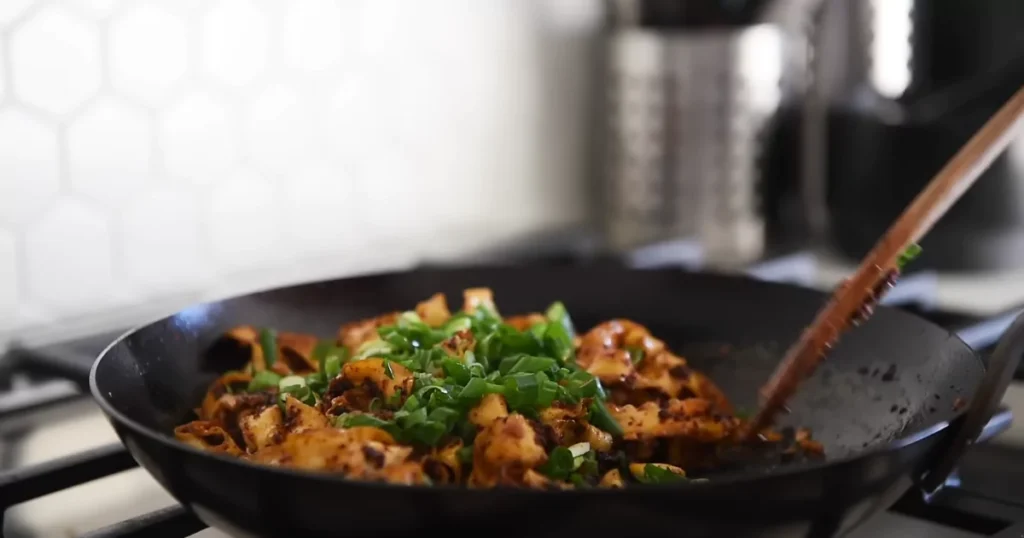Smoked pork tenderloin is a show-stopping centerpiece that marries the deep, rich flavors of timber-fired smoking with the natural tenderness of premium pork. This recipe is best for any occasion, providing a juicy, soften-in-your-mouth texture greater by way of a harmonious combo of spices and marinades. Whether you’re the use of a pellet smoker for comfort, an electric smoker for precision, or an offset smoker for that classic barbeque taste, this manual guarantees perfect results every time.
Beyond its mouthwatering taste, smoked beef tenderloin is a flexible dish that pairs beautifully with numerous aspects, from roasted vegetables to creamy mashed potatoes. It’s a super preference for each beginners and seasoned pitmasters, as the process is straightforward but promises restaurant-first-class results. Follow these step-by-step commands to master the artwork of smoking beef tenderloin, along with expert tips to elevate your cooking.

INGREDIENTS AND SUBSTITUTION FOR SMOKED PORK TENDERLOIN
1. Pork Tenderloin:
Description: Pork tenderloin is a lean, gentle cut of red meat located along the backbone. It is small, cylindrical, and chefs quick even as keeping moisture.
Selection Tips: Look for a tenderloin weighing 1–2 lbs with a pale purple shade and minimal fats. Avoid tenderloins pre-marinated or injected with solutions if you want to manipulate over-taste.
Nutritional Benefits: High in protein, low in fats, and a very good supply of nutrients like B6 and B12.

substitution:
Pork Loin: A large and less smooth reduce; modify the cooking time because it takes longer to cook dinner.
Chicken Breast: For a leaner, rooster-primarily based alternative with a comparable marinade and cooking approach.
Beef Tenderloin: If you opt for red meat, the cooking approach may be tailored.
2. Dry Rub Spices:
Smoked Paprika: Adds a smoky depth of taste, critical for complementing the smoker’s natural aroma.
Substitute with ordinary paprika and a dash of liquid smoke to duplicate the smoky flavor.
Use chipotle powder for a smokier and spicier profile.
Garlic Powder and Onion Powder: Provide savory, earthy undertones that enhance the beef’s flavor profile (Replace with granulated garlic or freshly minced garlic for a stronger flavor).
Onion Powder: Swap with finely grated clean onion or shallots.
Kosher Salt: Helps tenderize the meat and amplifies all different flavors (replace with sea salt or desk salt, but reduce the amount for table salt because of its finer grain)
Black Pepper: A conventional seasoning that adds moderate warmth and depth (Substitute with white pepper for a milder, much less pungent flavor.)
Ground Mustard: Adds diffused tanginess, balancing the savory and smoky notes (Replace with Dijon mustard within the marinade or turmeric powder for a special however complementary spice.)
Cayenne Pepper: Omit for a milder rub or use pink pepper flakes for the same warmth stage.
Cayenne Pepper (Optional): For people who enjoy a touch of spice, cayenne pepper adds a gentle kick.
3. Marinade Ingredients (Optional):
Olive Oil: Helps emulsify the marinade and keeps the red meat wet (Use vegetable oil, avocado oil, or grapeseed oil for similar effects).
Apple Cider Vinegar: Enhances tanginess and acts as a tenderizer by using breaking down proteins (Substitute with white wine vinegar, balsamic vinegar, or rice vinegar for a milder tang.)
Honey or Brown Sugar: Adds sweetness that caramelizes at some point of cooking, complementing the smoky flavors (Replace with maple syrup, agave nectar, or molasses for sweetness).
Soy Sauce: Introduces umami richness, enhancing the general taste (Swap with tamari for a gluten-free option or coconut aminos for a lower sodium alternative).

4. Smoking Essentials:
Wood Chips
Applewood: Ideal for a mild, fruity taste (Substitute with pear or peach wood chips for a similar mild sweetness.)
Cherry: Provides stability of sweetness and subtle smokiness (Use maple for a balanced and slightly sweet smoke).
Hickory: Offers a formidable, robust smoky flavor for individuals who decide on more potent profiles(Swap with oak or mesquite for a similarly strong, earthy flavor)
Spritz Liquid
Apple Cider: Adds sweetness and moisture to the beef at some point during the smoking technique (Replace with pineapple juice, orange juice, or plain water).
Apple Cider Vinegar Mix: Introduces tangy notes whilst preserving moisture(Use a diluted lemon juice mix or white vinegar.)
Ingredient Insights:
Versatility: Each component is customizable. For example, change cayenne pepper with smoked chipotle powder for an extraordinary smoky warmness or replace honey with maple syrup for a completely unique sweetness.
Purpose: Each spice and marinade ingredient serves to enhance the natural taste of the beef even adding layers of complexity.
Tips for Successful Substitutions for Pork Tenderloin
Balance flavors: For each substitution, the intention is to keep the stability of smoky, sweet, savory, and tangy factors.
Experiment with combinations: Pair replacement woods and spritz beverages to discover your selected taste profile.
Pro Tips for Perfect Smoked Pork Tenderloin:
Wood Choice: Applewood supplies a mild sweetness, while hickory adds a formidable, earthy taste. Cherry offers a balance of each.
Temperature Control: Consistent smoker temperature is prime to even cooking. Avoid frequent lid beginning.
Storage and Leftovers: Refrigerate leftover tenderloin in a hermetic container for up to three days. It can be reheated or sliced for sandwiches or salads.
Why This Recipe Stands Out:
Flavorful Rub and Marinade: A balanced mix of smoky, candy, and tangy flavors ensures each chew is memorable.
Adaptability: Works seamlessly across pellet, electric-powered, and offset smokers, catering to all possibilities.
Versatile Cooking Methods: Adapts seamlessly to pellet, electric, and offset smokers.

Serving Suggestions:
Side Dishes: Pair with garlic mashed potatoes, roasted vegetables, or a crisp coleslaw.
Sauces: Serve with honey mustard, barbecue sauce, or a simple chimichurri.
Presentation Tips: Garnish with clean herbs like thyme or parsley for brought attraction.


Smoked Pork Tenderloin Recipe (Pellet, Electric, or Offset Smoker)
Ingredients
For the Pork
- Pork Tenderloin (1–2 lbs): Choose clean, high-quality tenderloin with minimal fats.
Dry Rub:
- 2 tbsp smoked paprika
- 1 tbsp garlic powder
- 1 tbsp onion powder
- 2 tsp kosher salt
- 1 tsp black pepper
- 1 tsp floor mustard
- half tsp cayenne (non-compulsory for spice)
Optional Marinade
- 1/4 cup olive oil
- 2 tbsp apple cider vinegar
- 2 tbsp honey
- 1 tbsp soy sauce
Smoking Essentials
- Smoking Wood Chips: Applewood, hickory, or cherry for ideal flavors.
Spritz Liquid
- 1/4 cup apple cider or a mix of cider vinegar and water.
Instructions
1. Prepare the Tenderloin
- Trim off extra fat and silver skin from the pork.
- Pat dry with paper towels to make certain even application of seasonings.
- Apply the dry rub generously, pressing it into the beef for max flavor. Optionally, marinate the tenderloin for 2–12 hours within the refrigerator for deeper taste.
2. Preheat the Smoker
- Pellet Smoker: Preheat to 225°F. Fill the hopper along with your wooden pellet preference.
- Electric Smoker: Preheat to 225°F, making sure the water pan is stuffed.
- Offset Smoker: Set to 225°F, keeping consistent warmth via dealing with the hearth.
3. Smoking the Tenderloin
- Place the tenderloin on the smoker grate.
- Insert a meat probe into the thickest a part of the red meat for unique tracking.
- Smoke for 1.5–2 hours, spritzing every 30 minutes with apple cider to keep it moist and enhance the smoky flavor.
4. Check for Doneness
- Aim for an internal temperature of 145°F (medium doneness) for juicy results. Use a meat thermometer for accuracy.
5. Optional Sear
- For a caramelized crust, sear the tenderloin over excessive heat for 1–2 mins per side after smoking.
6. Rest and Slice
- Let the tenderloin rest for 10 minutes before slicing into medallions. This step ensures the juices are redistributed for tender meat.

How long does it take to smoke red meat tenderloin?
It takes about 1.5-2 hours at 225°F, depending on the size of the tenderloin.
What’s the excellent wood for smoking red meat?
Applewood, cherry, and hickory are high-quality choices for smoking red meat tenderloin.
How do I store leftovers?
Store leftover red meat in an airtight container within the refrigerator for up to a few days. Reheat lightly to keep moisture.
For more recipes, Visit our website:https://chefsecretsbook.com/







